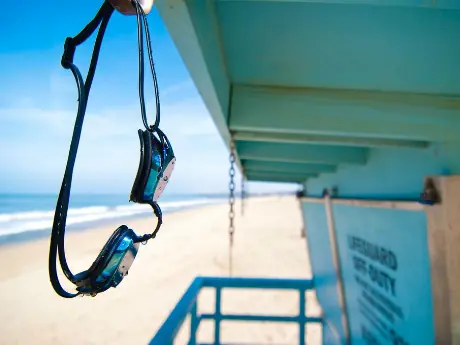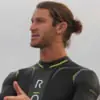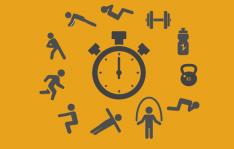
I found myself in a first-world predicament during a recent ocean group session I coached. I was prepped to lead an ambitious-distance swim with an elite group, but failed to pack a cap or goggles.
As someone with long hair and contact lenses, this presented some distinct challenges for ocean swimming. One of the athletes offered up an extra pair of goggles he had, but prefaced by saying that the goggles are 'a bit old, and foggy...and sticky.' Oh boy. The goggles resembled that of an antique: an outdated, over-used set of plastic and rubber pieces that could hardly pass as goggles.
More: Check Your Head: Tips for Proper Swim Body Posture
This swim was the first time I truly appreciated the value of a good pair of goggles. I turned the swim into a positive exercise of trusting my stroke, but with that said, I could hardly see anything. I couldn't help but laugh the entire time at my inability to see, and so began the blueprint of this article.
A Brief History of Goggles
To the surprise of many, swimming goggles date back to the 14th century. Persian pearl divers crafted goggles out of polished tortoise shells used as lenses, and this style slowly adapted over time. In 1911, Thomas Burgess became the second person to successfully cross the English Channel, and he was wearing goggles similar to motorcycle goggles. At this point, goggles were still not water tight, but provided some improved visibility.
Even as the technology gradually improved, goggles were considered to be a training aid and hence not allowed in competition. In 1970, David Wilkie was the first to wear goggles in international competition at the Commonwealth Games. Wilkie's goggles pale in comparison to what swimmers wear today, thanks to the degree of advanced engineering invested into developing competitive goggles.
Form Over Function?
The future of aquatics is now. Nearly every record is bettered each Olympics, and it seems there is an infinite ceiling for swimming performance. Swimmers have dialed in their training regimens, but the equipment being used has also become so advanced that it's difficult to standardize such usage and rules. Goggles can now provide advanced data such as heart data and GPS, leaving little to the imagination. While it's fun to dream about what's next, it's important to remember the real the purpose of goggles.
Simply put, goggles provide a swimmer with eye protection while in the water. Our eyes have trouble seeing things easily in water because of the refractive properties of water. The goggle lens helps bend the light entering your eyes, allowing the light to focus properly on your retina. Beyond this, goggles can be mirrored and provide UV protection, shielding your eyes from the glare of the sun during outdoor swimming. Finding the appropriate pair for your needs is highly important.
More: Back to Basics: Adjustable Swim Workout Sets For Triathletes
When to Wear What
Selecting the ideal pair of goggles for each specific swimming environment can be overwhelming. Having a few different pairs in your swim bag is an inexpensive, but valuable investment to prepare you for various conditions—pool or open water. For swimming predominantly in pools, here are a few things to keep in mind when searching for the perfect pair of goggles.
- Low drag profile design
- Full field of view
- Assorted nose bridge pieces/options to fit your nose best
- Comfortable form-fit
- Natural suction to face
- Mirrored for bright outdoor conditions
If you plan to do any swimming in the open water, you'll need a couple pairs of goggles specific to the conditions you'll be swimming in. For example, on certain days the conditions could be choppy, foggy or incredibly bright. Without the proper visibility while swimming open water, you're at risk of compromising your navigation, as well as putting yourself in potential danger. Consider these features when selecting the right pair of open water goggles.
- Wide-angle lens for maximum visibility and sighting
- Comfortable gaskets for extended use
- Lightweight
- Double head strap for a secure fit
- UV protection for optical precision and glare reduction
- Anti-fog lenses
After figuring out your needs, make a trip to your local swim shop and try on different pairs of goggles. Regardless of how cool a pair may look online or if your friend recommends a particular pair, your pair needs to be specific to the shape of your face and the exact environment you'll be using them in.
Because goggles have a shelf life and are lost regularly, I recommend keeping the price under $30. Simple maintenance can extend the life of your lenses. I recommend never touching the inside of the lenses with your fingers, as the oils on your hands will break down the anti-fog property of them. In addition, washing them with cold water and hang drying them after each use will help to keep them clean.
More: Seven Late-Season Half-Distance Triathlons
Having three or four different pairs of goggles in your gear bag may seem like overkill, but the last thing you want is to be unprepared for the conditions at hand on race day. A bad experience can easily be avoided by having a diverse arsenal of goggles with you at each swim. Swimming is a relatively inexpensive sport to take on, but be sure not to overlook the value of a nice pair of goggles. After the blurry, leaky goggle experience I had recently, my respect for good goggles couldn't be more profound.
About the Author










Discuss This Article